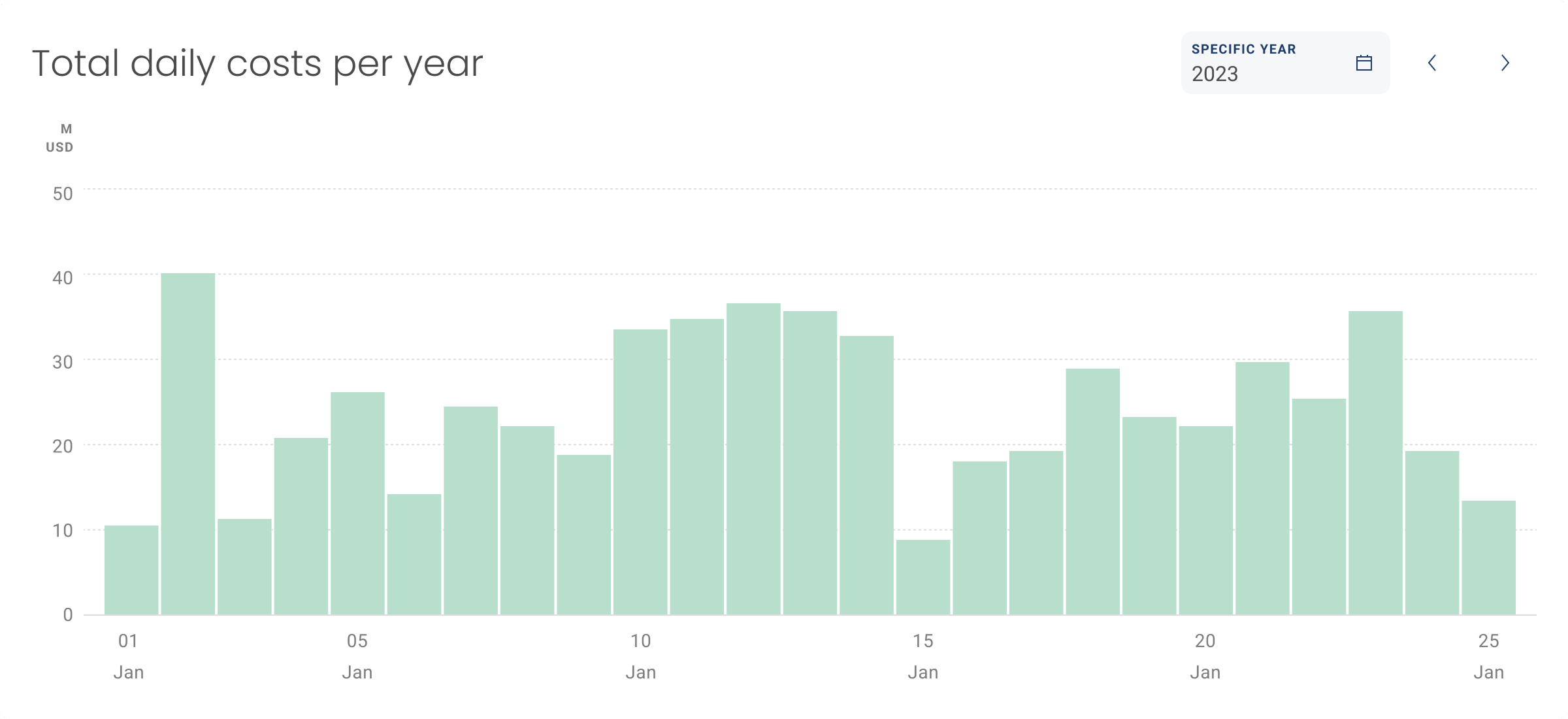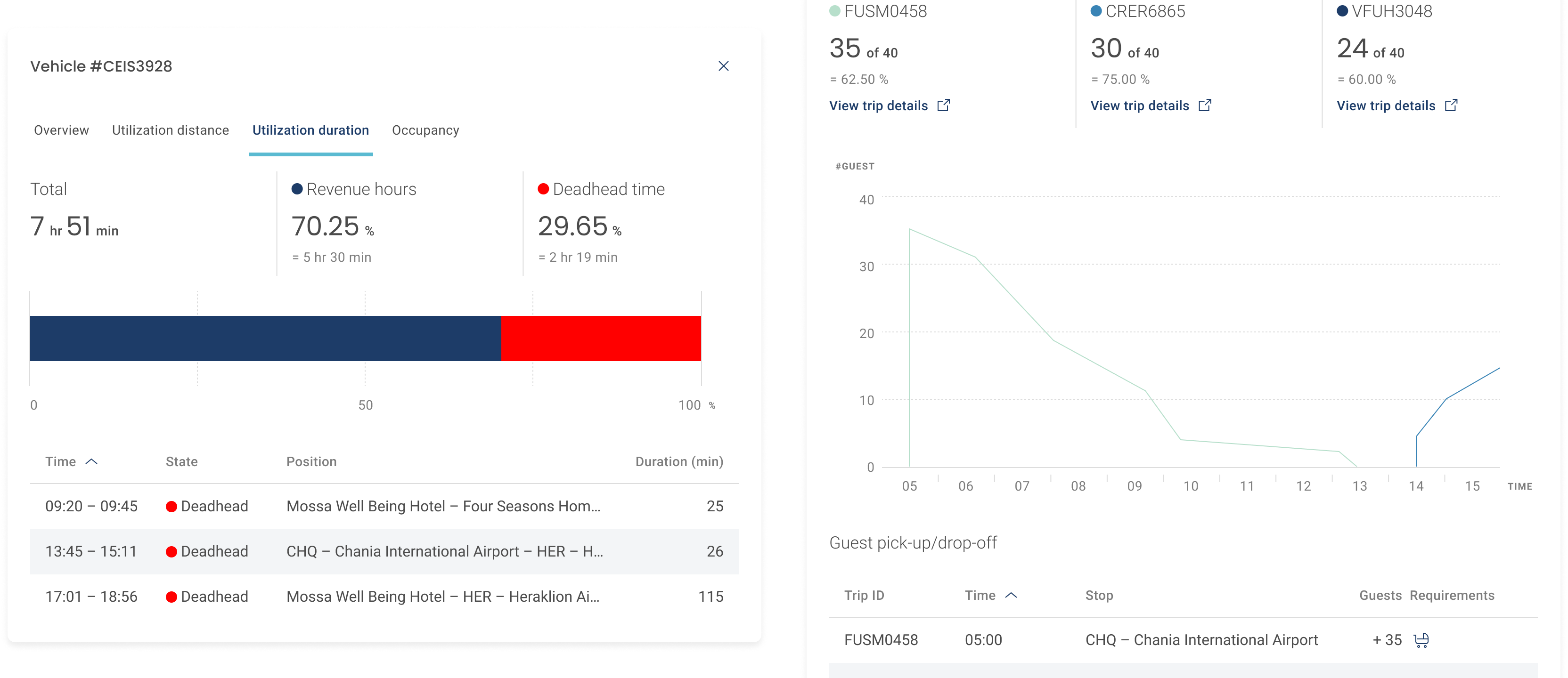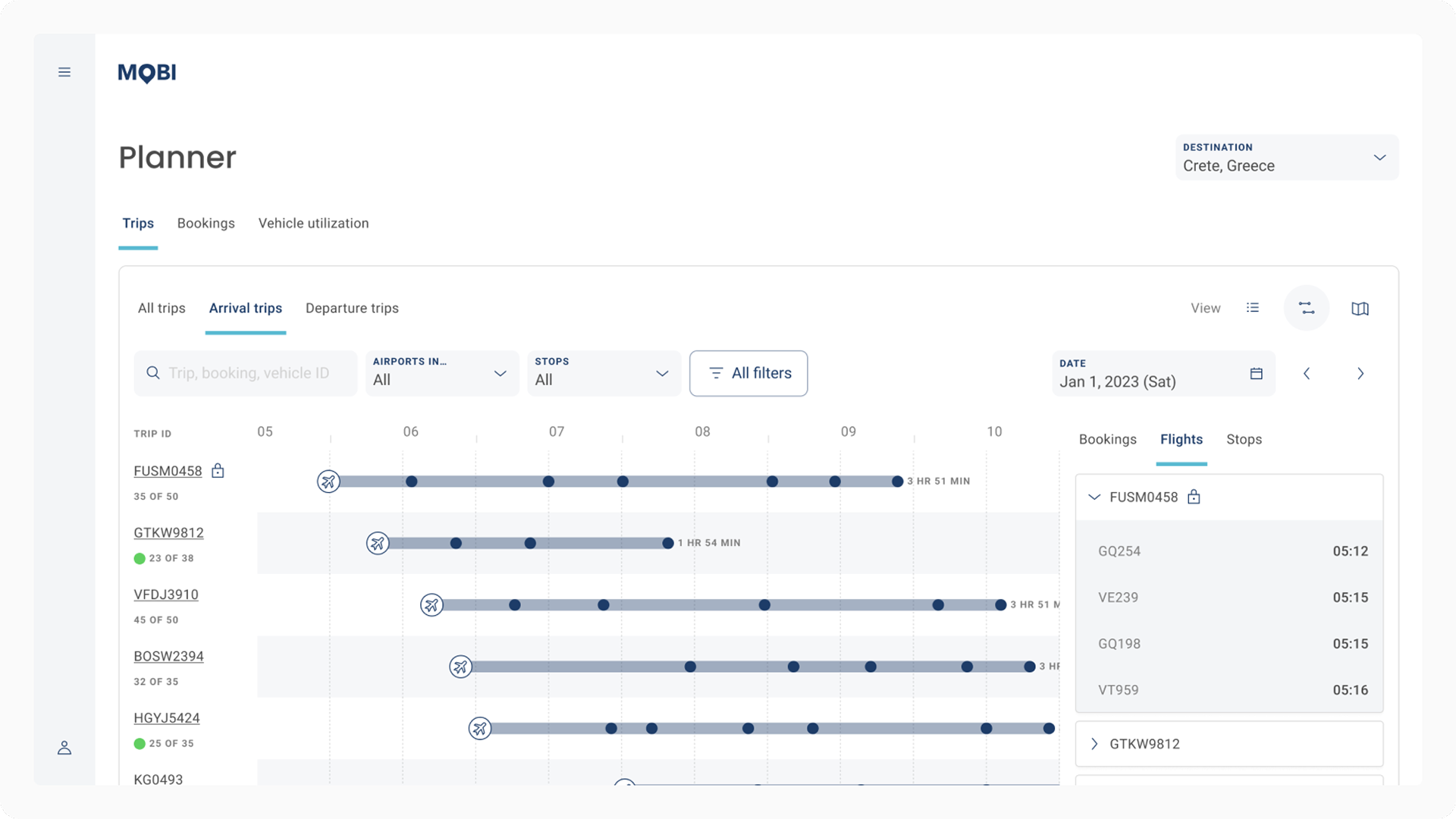Understanding how crucial this tool is for transfer managers shaped the design. By considering their work environment and the challenges they face, I gained insights into prioritizing displayed information and developing workflows that enable managers to effectively leverage Mobi's logistics algorithm in their daily tasks.
Transfer Share
Shedding light to hidden complex transfer logistic planner
Mobi's system empowers integrated travel providers like TUI by streamlining their airport pick-up logistics. It intelligently generates schedules detailing vehicle orders from vendors, precise airport arrival times, passenger names, and their respective hotel destinations. Although the system's algorithm excels, managers require visibility into these operations and the ability to intervene when necessary.

Working in close proximity to airport ground staff, the users of this tool previously managed such complex task of planning vehicle transfers between airports and numerous hotels using paper-based methods. This made it challenging to assess the efficiency of the work. Their planning was further complicated by factors like flight delays, underutilized buses due to a lack of coordinating vehicles, and airport restrictions on bus waiting times.
To gain a comprehensive understanding, I not only observed the users' challenges but also consulted with the engineer who developed the solution. This allowed me to grasp how the system addresses these pain points and how users can manually adjust the system's outputs. Furthermore, the system offers the flexibility to modify parameters in response to real-time changes encountered on the ground.
I was pleased that the tool accurately reflected the backend operations and made the system's logic comprehensible to users
My primary challenge was to visualize the system-generated transfer plans in a way that empowers users to effectively assess their logic. Furthermore, if manual adjustments become necessary, users should be able to explore various options and understand the potential consequences before finalizing any changes.
To address this, I explored different chart types to best represent the information and organized functionalities into distinct sections to minimize clutter. I also created several information groupings to ensure users can efficiently access the data relevant to different scenarios.
When users make modifications, the tool offers explanations, comparisons between different options, and displays the relevant variables. This approach ensures users can make well-informed decisions and clearly understand the impact of the actions.

Role
Product Designer
Client
Mobi
Other contributors
Machine Learning Engineer, Fullstack Developer
Would you like to see more of the works?
5G in Automotive


